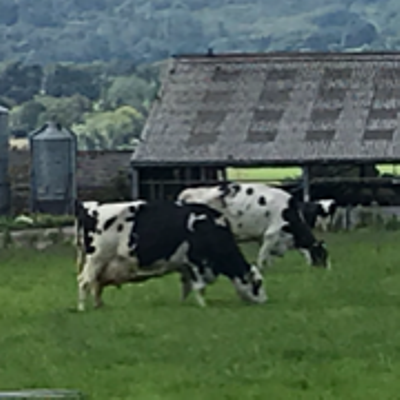Feed Sorting in a Dairy Ration
3 October 2019Despite the time and effort put into presenting cows with a well-mixed ration, it is in their nature to select the highly palatable concentrate portion of the TMR over the forage components.
Large meals of rapidly fermenting carbohydrates and low Neutral Detergent Fibre (NDF) can lower the pH of the rumen. Sub-optimal rumen pH, which is below 5.8, is often referred to as sub-acute ruminal acidosis, or SARA.
The effects of SARA can be wide ranging. The low pH affects rumen bacteria involved in fibre digestion. This means cows suffering from SARA will have poor feed efficiency, reduced feed digestibility and protein synthesis, resulting in reduced milk yield and milk fat percentage, as well as inconsistent dry matter intake. In extreme cases it can also lead to diarrhoea, ruminal ulcers, ruminal parakeratosis (hardening of the rumen surface) and liver abscesses.
It is also worth considering that when one cow is able to select out the concentrates in a ration that means that another cow will not get these concentrates when they are feeding. It is the less dominant cows and heifers that may not receive their full concentrate allocation. This can potentially lead to some of the herd being at risk of SARA and some of the herd being at risk of ketosis, if their nutritional requirements are not met.
These risks can be reduced in a number of ways:
Feed space
As the main driver for cows to eat is fresh feed delivery, and as herd animals tend to synchronise behaviour, it is important there is enough feed space available. If there is not, dominant cows will take their fill first leaving subordinate cows with what is left. A divided feed rail or locking yoke will also give subordinate cows more confidence to feed.
More meals
A cow taking more, smaller meals will have time to naturally buffer periods of lower rumen pH. This mimics grazing behaviour and could be achieved by feeding more than once a day or by making sure feed is pushed up regularly.
Ration composition
Adding straw will increase the NDF of the TMR, but if not chopped to a short enough length, it can make feed sorting easier. The ideal length is between 2 to 3 cm.
Moist feeds can reduce sorting as they will help to bind concentrates and forage, especially if the forage is of high dry matter (over 35%).
Adding water to the ration, or “compact feeding”, has become popular in parts of Europe when feeding high dry matter forages. This involves soaking the concentrate portion of the TMR with equal parts of water for several hours, but preferably overnight before forage is added to the wagon.
It does require more mixing, so more time, machinery wear and fuel. Observed changes in feeding behaviour have included cows eating from the top of the pile rather than nosing through it. This, in turn, means that less pushing up is required. Increased yields, more consistent dung and improved butterfat percentage have also been reported, along with less lameness as cows spend less time eating and more time lying down.
Alasdair Scott for the Farm Advisory Service
Sign up to the FAS newsletter
Receive updates on news, events and publications from Scotland’s Farm Advisory Service

